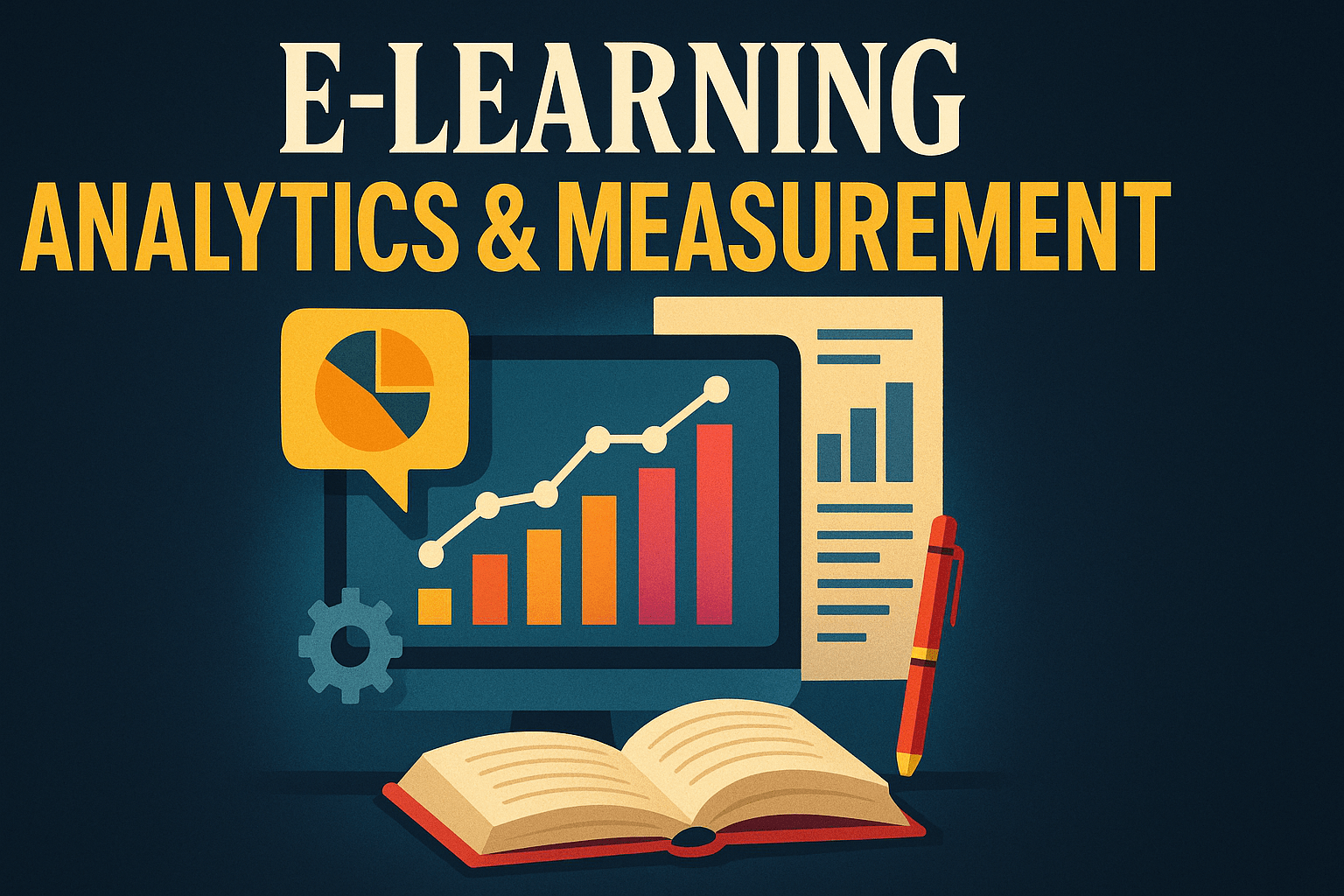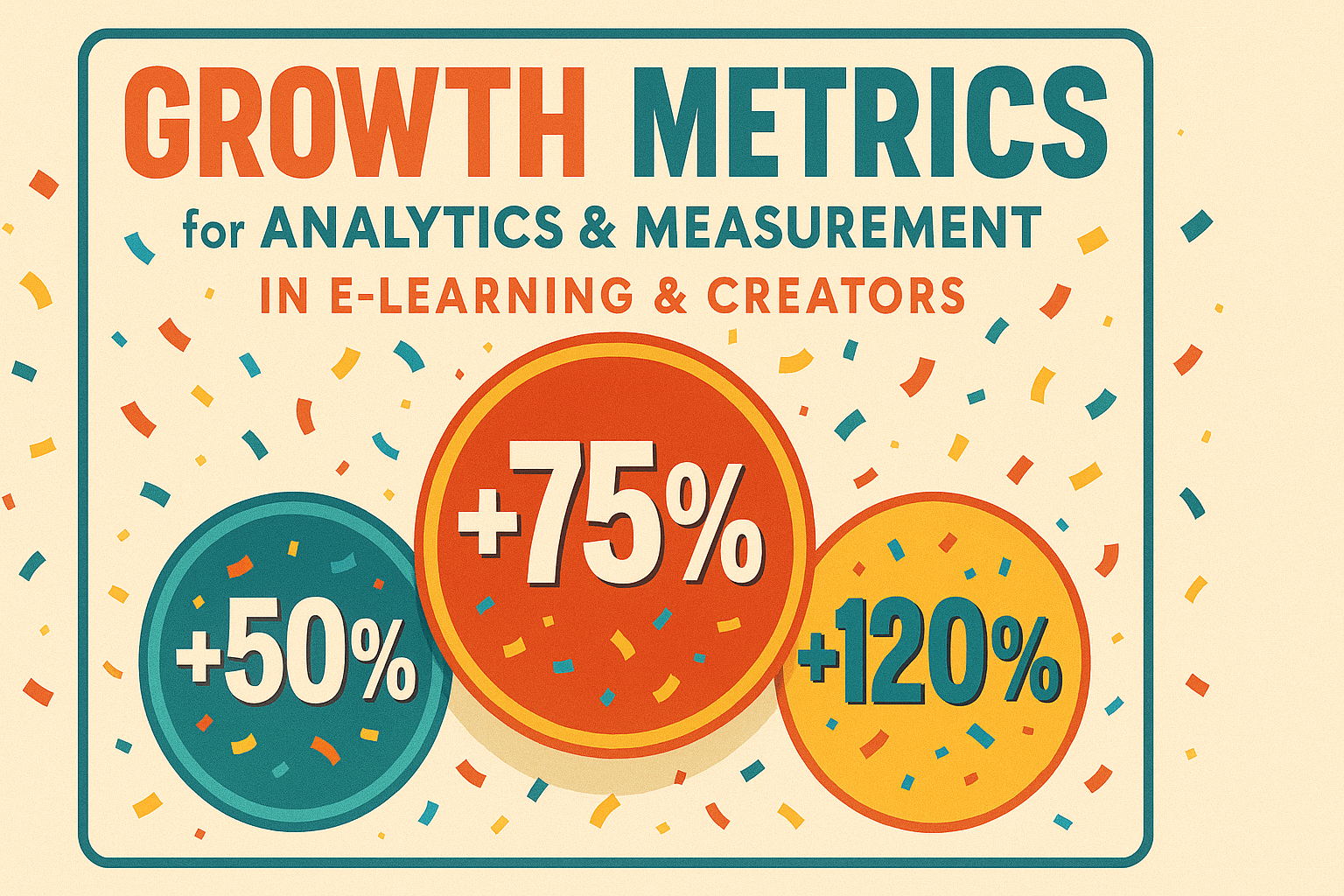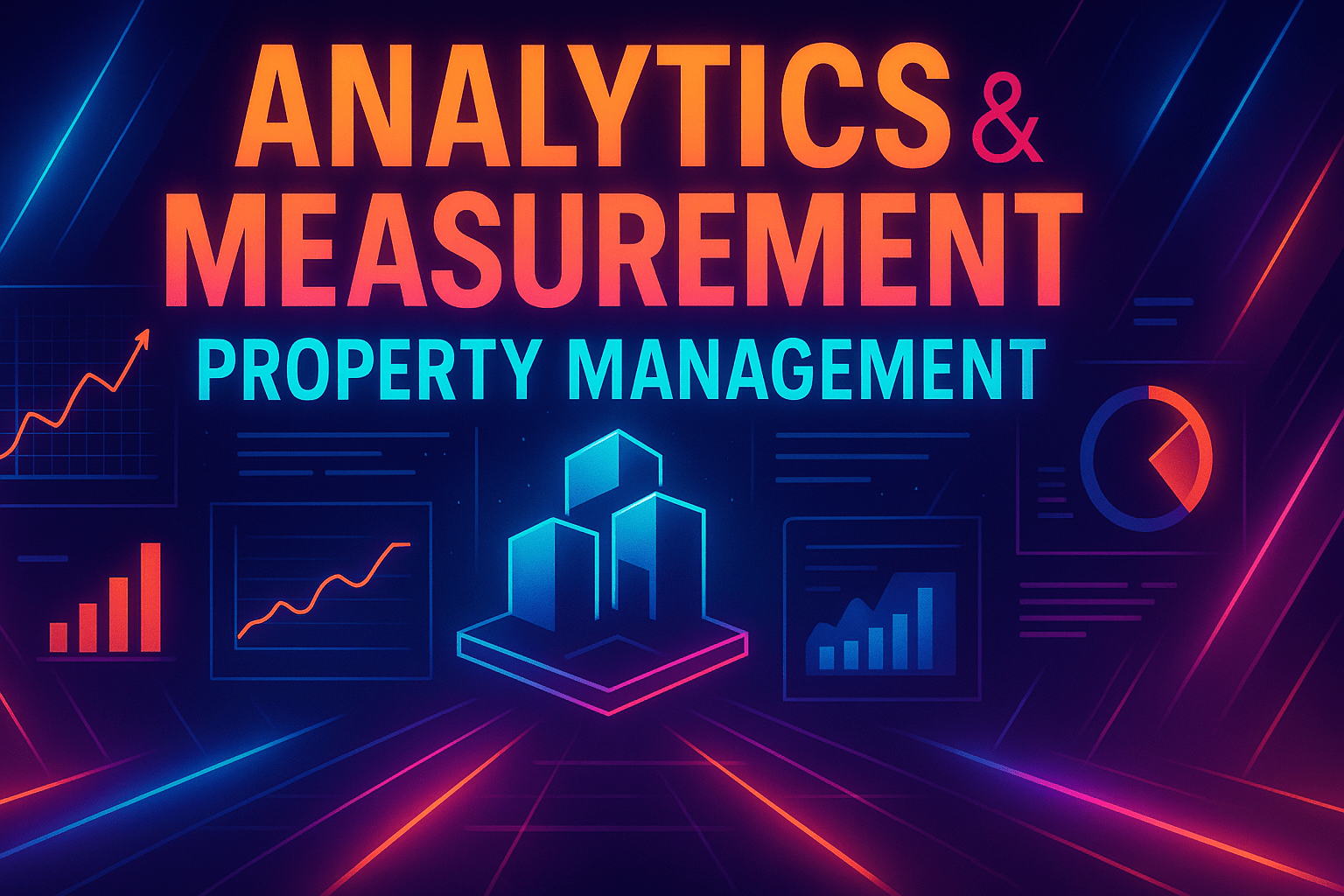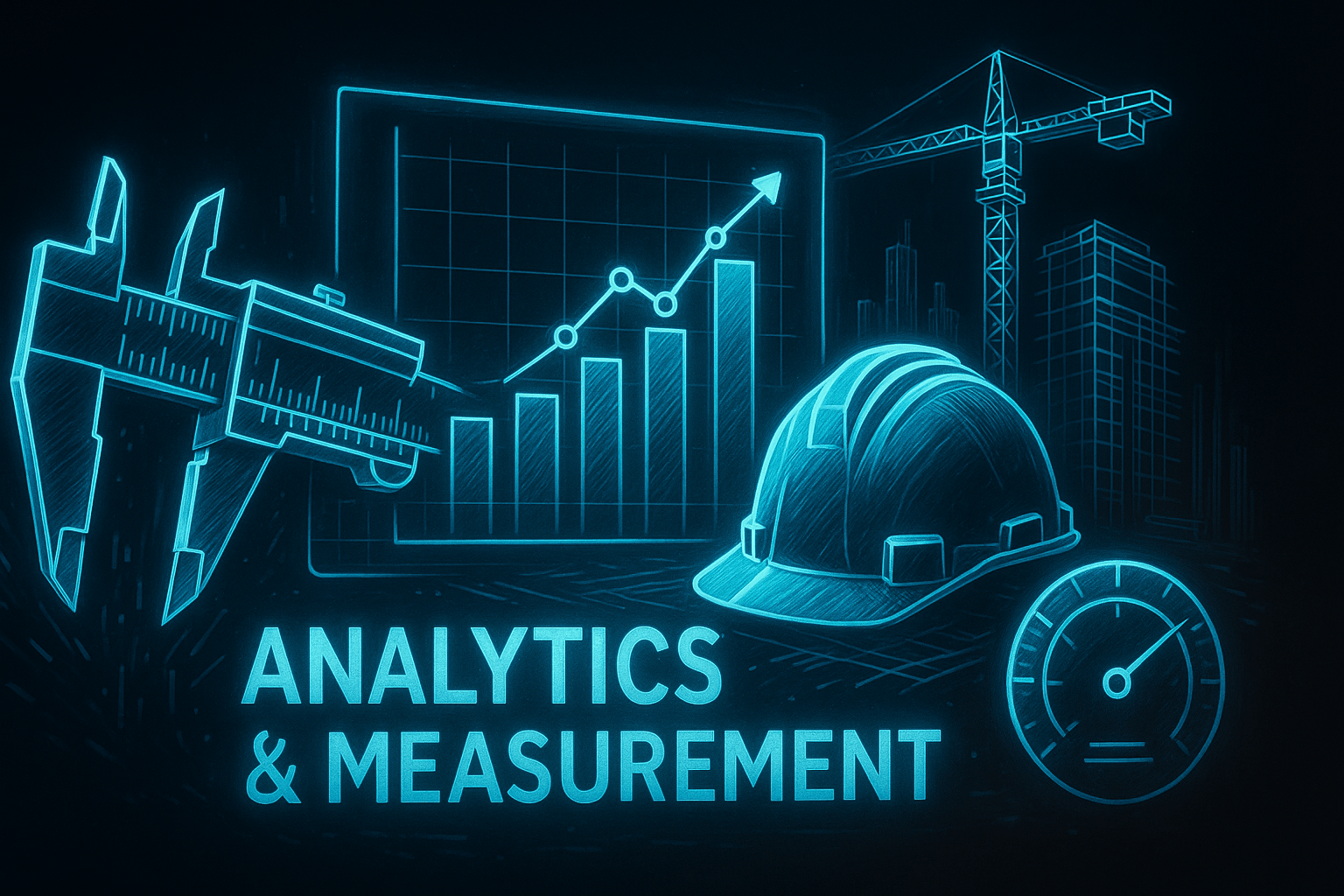Analytics & Measurement for E-learning & Creators: Transform Data Into Revenue Growth
by Design Delulu Editorial · October 25, 2025

Smart, fast, and measurable. Here's how analytics & measurement helps E-learning & Creators win.
E-learning platforms and creator businesses generate mountains of data every single day—course enrollments, video completions, community interactions, purchase patterns, and marketing touchpoints. Yet most creators and educators are flying blind, making decisions based on gut feel rather than actionable insights. Without proper analytics and measurement infrastructure, you're leaving money on the table and missing critical opportunities to optimize your student experience, pricing strategy, and content offerings.
The difference between thriving creator businesses and those that plateau often comes down to measurement discipline. When you can accurately track which lead magnets convert, which course modules cause drop-off, which email sequences drive purchases, and which traffic sources deliver your most engaged students, you gain the strategic advantage needed to scale sustainably. Professional analytics and measurement systems transform your business from a guessing game into a data-informed growth engine where every decision is backed by evidence and every marketing dollar is accountable.

Why E-learning & Creator Businesses Need Professional Analytics Infrastructure
The creator economy has exploded into a multi-billion dollar industry, but most course creators and educational entrepreneurs are still using basic platform analytics that only tell part of the story. Your Teachable dashboard shows course completions, your email provider tracks open rates, your social media reports engagement—but none of these systems talk to each other. This fragmented view makes it nearly impossible to understand your true customer journey or calculate accurate ROI on your marketing investments.
Professional analytics infrastructure solves the attribution puzzle that plagues creator businesses. When a student purchases your $2,000 course, did they discover you through that YouTube video six months ago, your recent Instagram Reel, the podcast interview last quarter, or the SEO blog post they found on Google? Without proper tracking and attribution modeling, you're making critical budget decisions in the dark, potentially cutting channels that are actually driving your best customers.
E-learning businesses face unique measurement challenges that generic analytics setups can't address:
- Long consideration cycles: Students often research for weeks or months before purchasing, touching dozens of content pieces across multiple platforms
- Complex product ecosystems: Free lead magnets, low-ticket tripwires, mid-tier courses, high-ticket coaching, membership communities—each requires different tracking strategies
- Multi-platform delivery: Your content lives on YouTube, podcasts, course platforms, membership sites, email, and social media—all generating valuable behavioral data
- Engagement quality over vanity metrics: A million Instagram followers means nothing if they never become paying students; you need to track metrics that correlate with revenue
The most successful creator businesses treat analytics as a competitive advantage, not an afterthought. They implement robust measurement frameworks from day one, establishing clear data governance, consistent tracking protocols, and dashboards that surface insights rather than just raw numbers. This foundation allows them to test aggressively, optimize continuously, and scale confidently because they know exactly what's working.
Core Components of Effective Analytics & Measurement Systems
A professional analytics setup for e-learning and creator businesses requires multiple integrated components working together to capture the complete picture of your business performance. Let's break down the essential elements you need to implement for reliable, actionable measurement.
Event Tracking & Ecommerce Implementation
Modern analytics begins with comprehensive event tracking that captures every meaningful interaction students have with your content and offers. Using Google Analytics 4 with enhanced ecommerce tracking and server-side tagging, you can monitor the complete student lifecycle from first touch to course completion and beyond.
Essential events to track in your creator business include:
- Content engagement: Video play/pause/completion, module progress, quiz attempts, download clicks, resource access
- Lead generation: Opt-in form submissions, lead magnet downloads, webinar registrations, quiz completions, assessment starts
- Commerce activities: Product views, add-to-cart actions, checkout initiations, purchase completions, upsell interactions, payment plan selections
- Community interactions: Forum posts, comment submissions, direct messages, live event attendance, group participation
- Retention indicators: Login frequency, return visits, content consumption patterns, support ticket submissions, cancellation requests
Server-side tagging provides crucial advantages for creator businesses by ensuring more accurate data collection that isn't blocked by browser privacy settings or ad blockers. It also improves page load speeds—critical for student experience—and gives you better control over what data is shared with third-party platforms.
Source-of-Truth Dashboard Architecture
Raw data is useless without proper visualization and contextualization. Your dashboard becomes your strategic command center, surfacing the metrics that actually drive business decisions and filtering out the noise that distracts from what matters.
Effective creator dashboards in Looker Studio or similar platforms should provide multiple views:
- Executive overview: Revenue, profit margins, student lifetime value, acquisition costs, growth rates, cash flow—the metrics that determine business health
- Marketing performance: Channel attribution, campaign ROI, content performance, traffic quality scores, conversion rates by source
- Product analytics: Course completion rates, module drop-off points, student satisfaction scores, support ticket trends, feature adoption rates
- Funnel visualization: Stage-by-stage conversion rates from awareness through purchase and retention, with cohort comparisons over time
- Content effectiveness: Which blog posts, videos, podcasts, and social content drive the highest-value students and generate the most revenue
The key is establishing a single source of truth that everyone on your team references for decisions. When your copywriter, paid ads manager, course designer, and you as the founder are all looking at the same data with the same definitions, you eliminate confusion and align efforts toward common goals.
Attribution Modeling That Reflects Creator Journeys
Standard attribution models fail for creator businesses because they don't reflect how students actually discover and trust educators. A student might watch 50 YouTube videos, consume a dozen blog posts, attend three webinars, and receive 20 emails before finally purchasing—and generic last-click attribution would give all credit to that final email.
Custom attribution modeling for creators requires nuanced approaches:
- First-touch attribution: Useful for understanding which channels bring new audiences into your ecosystem
- Last-touch attribution: Shows which touchpoints finally convert browsers into buyers
- Linear attribution: Gives equal credit to every interaction, recognizing that trust-building is cumulative
- Time-decay attribution: Weights recent interactions more heavily, acknowledging that timely content often triggers purchase decisions
- Position-based attribution: Credits both discovery and conversion moments while acknowledging the nurture touches in between
The most sophisticated creator businesses use custom weighted attribution models calibrated to their specific funnel dynamics. They might weight early-stage awareness content at 20%, middle-funnel educational content at 30%, and final conversion touchpoints at 50%, based on actual analysis of their customer journey data.
Data Governance & Quality Assurance
Even the most sophisticated analytics setup is worthless if the underlying data is inconsistent, incomplete, or inaccurate. Data governance establishes the rules, processes, and standards that ensure your measurement infrastructure delivers reliable insights you can confidently act upon.
Critical governance elements include:
- Naming conventions: Standardized event names, parameter formats, campaign tagging structures that remain consistent across all platforms and team members
- Documentation: Clear tracking plans that specify what gets measured, how it's measured, what the data means, and who owns each metric
- Quality checks: Regular audits to verify tracking accuracy, catch implementation errors, identify data gaps, and validate dashboard calculations
- Access controls: Appropriate permissions ensuring the right people can view, edit, or export data without compromising security or creating confusion
- Change management: Formal processes for updating tracking when you launch new courses, change funnel structures, or modify your business model
Without proper governance, analytics degrades over time as team members implement inconsistent tracking, undocumented changes break reporting, and data quality issues compound until nobody trusts the numbers anymore.

Implementation Process: From Strategy to Optimization
Implementing professional analytics infrastructure follows a structured process designed to deliver quick wins while building toward comprehensive long-term measurement capabilities. Here's how the process unfolds for e-learning and creator businesses.
Phase 1: Discovery & Goal Alignment
Every successful analytics implementation begins with clarity about what you're actually trying to measure and why. This discovery phase establishes the foundation for everything that follows by answering critical questions about your business model, growth objectives, and decision-making needs.
Key activities in the discovery phase:
- Map your complete customer journey from initial awareness through purchase, onboarding, engagement, and retention
- Identify the specific business questions you need data to answer: What's our actual customer acquisition cost? Which content creates paying customers? Where do students get stuck in our courses?
- Audit existing measurement systems to understand current capabilities, identify gaps, and preserve what's already working
- Define success metrics aligned with revenue goals rather than vanity metrics—focus on outcomes that directly impact profitability
- Establish constraints around budget, timeline, technical resources, and team bandwidth
This phase typically takes 1-2 weeks and involves stakeholder interviews, data infrastructure review, competitive benchmarking, and strategic planning sessions. The output is a clear measurement strategy document that guides all subsequent implementation work.
Phase 2: Blueprint & Architecture Design
With goals clarified, the blueprint phase translates business requirements into technical specifications. This is where you design the actual tracking architecture, define specific events and parameters, plan dashboard layouts, and create detailed implementation documentation.
Blueprint deliverables include:
- Tracking plan documentation: Comprehensive specifications for every event, parameter, and custom dimension you'll track across all platforms
- Technical architecture diagram: Visual representation of how data flows from your website, course platform, email system, and other tools into your analytics warehouse and dashboards
- Dashboard wireframes: Mockups showing exactly what metrics appear in each dashboard view, how they're calculated, and what insights they're designed to surface
- Attribution model specifications: Detailed rules for how credit gets assigned across touchpoints based on your specific funnel dynamics
- Implementation timeline: Phased rollout plan prioritizing highest-impact tracking first while building toward comprehensive coverage
The blueprint phase ensures alignment between technical implementation and business needs before any code gets written. This planning investment prevents costly rework and ensures your analytics infrastructure will actually deliver the insights you need.
Phase 3: Build, Test & Deploy
Implementation transforms your carefully planned blueprint into functioning analytics infrastructure. This phase involves technical setup across multiple platforms, rigorous quality assurance testing, and staged deployment that minimizes disruption to your business operations.
Build activities include:
- Configure Google Analytics 4 properties with custom events, conversions, and ecommerce tracking specific to your creator business model
- Implement server-side tag management using Google Tag Manager Server for improved accuracy and performance
- Set up conversion tracking and audience building across advertising platforms like Facebook Ads, YouTube Ads, and Google Ads
- Create calculated metrics, custom dimensions, and data transformations that provide business-relevant insights beyond raw event data
- Build Looker Studio dashboards with appropriate data connections, visualizations, filters, and sharing permissions
- Implement tracking across your course platform, checkout system, membership site, and other critical touchpoints
Quality assurance is non-negotiable before launch. Use Google Tag Assistant, GA4 DebugView, and manual testing to verify every event fires correctly, parameters pass accurate values, ecommerce data matches actual transactions, and dashboards display real-time data accurately. Test across different browsers, devices, and user scenarios to catch edge cases.
Staged deployment typically starts with core conversion tracking and revenue metrics, then expands to engagement tracking, content analytics, and advanced attribution as the foundation proves stable. This phased approach delivers value quickly while building comprehensive capabilities over time.
Phase 4: Optimization & Continuous Improvement
Analytics implementation isn't a one-time project—it's an ongoing discipline that evolves with your business. The optimization phase establishes processes for regular review, data-informed decision making, and continuous refinement of your measurement infrastructure.
Optimization rituals for creator businesses:
- Weekly metrics review: Quick dashboard check focused on key performance indicators, anomaly detection, and tactical adjustments based on recent data
- Monthly deep-dive analysis: Comprehensive examination of trends, cohort performance, campaign effectiveness, and strategic insights that inform content and marketing decisions
- Quarterly measurement audits: Formal review of tracking accuracy, data quality, dashboard relevance, and alignment between metrics and evolving business goals
- Experiment documentation: Systematic tracking of tests, hypotheses, results, and learnings that compounds your knowledge about what works for your specific audience
- Stakeholder reporting: Regular communication of insights, performance updates, and recommended actions to team members and partners
The most successful creators develop a test-and-learn culture powered by their analytics infrastructure. They use data to generate hypotheses, run controlled experiments, measure results rigorously, and systematically scale what works while quickly cutting what doesn't. This disciplined approach to optimization creates compounding advantages that separate market leaders from struggling competitors.

Industry-Specific Best Practices for E-learning Analytics
E-learning and creator businesses have unique characteristics that require specialized measurement approaches. Generic analytics advice fails to address the specific challenges and opportunities in educational content businesses. Here are proven practices tailored specifically for course creators, membership site owners, and educational entrepreneurs.
Map Measurement to the Creator Funnel
The creator funnel differs significantly from traditional ecommerce or SaaS models because trust-building and value demonstration happen over extended periods through content consumption. Your analytics must map to these distinct stages:
- Awareness stage: Track content reach, new audience growth, traffic sources, social shares, and initial engagement with top-of-funnel content
- Education stage: Measure content consumption depth—video watch time, blog read time, podcast episode completions, resource downloads
- Consideration stage: Monitor lead magnet conversions, email opt-ins, webinar registrations, case study views, pricing page visits
- Decision stage: Track checkout initiations, payment plan selections, objection-handling content views, testimonial interactions, purchase completions
- Onboarding stage: Measure first-lesson completion, welcome sequence engagement, community join rates, early milestone achievement
- Retention stage: Track ongoing login frequency, content completion rates, community participation, support interactions, renewal likelihood scores
By aligning metrics to each funnel stage, you can identify exactly where prospects get stuck, which content moves people forward, and where to focus optimization efforts for maximum impact.
Prioritize Student Success Metrics Over Vanity Metrics
It's tempting to celebrate social media follower counts, email list size, or website traffic—but these vanity metrics often have little correlation with actual revenue. Focus measurement on student outcomes and business results that directly drive profitability.
High-impact metrics for creator businesses include:
- Student lifetime value (LTV): Total revenue generated per customer across all purchases, upsells, and renewals
- Customer acquisition cost (CAC): Full-funnel cost to acquire a paying student, including content creation, advertising, tools, and time
- LTV:CAC ratio: The holy grail metric showing whether your business model is sustainable and scalable
- Course completion rates: Percentage of enrolled students who finish your programs—directly correlates with satisfaction, testimonials, and referrals
- Net Promoter Score (NPS): Likelihood students will recommend your courses to others—predicts organic growth and word-of-mouth marketing
- Revenue per subscriber: How much revenue your email list generates per person—shows content effectiveness and offer relevance
- Qualified lead rate: Percentage of new leads who match your ideal customer profile—quality over quantity
Ruthlessly prioritize metrics that correlate with revenue and student success. Everything else is just noise that distracts from what actually matters for building a sustainable creator business.
Implement Cross-Platform Identity Resolution
Students interact with your content across numerous platforms and devices—watching YouTube on mobile, reading blog posts on desktop, checking email on tablets, purchasing on their laptop. Without proper identity resolution, you're seeing fragments instead of complete customer journeys.
Strategies for connecting the dots:
- Use email as the universal identifier once someone opts in, passing it as a user property across platforms where possible
- Implement user ID tracking in GA4 that persists across devices once students create accounts or log in
- Leverage UTM parameters consistently across all marketing to track traffic sources even before identity is known
- Use Facebook Pixel and other platform pixels with Enhanced Conversion tracking to improve match rates
- Consider customer data platforms (CDPs) like Segment for sophisticated multi-platform identity resolution at scale
The investment in identity resolution pays massive dividends by revealing which content actually drives purchases, preventing attribution errors that waste marketing budget, and enabling personalization that improves conversion rates.
Build Feedback Loops Between Data and Content Creation
Your analytics should directly inform what content you create, how you structure your courses, which topics you prioritize, and where you invest production resources. Close the loop between measurement and creation to continuously improve based on what your data reveals about student needs and preferences.
Practical feedback mechanisms include:
- Track which blog posts and videos drive the most course enrollments, then create more content on those topics and in those formats
- Analyze course module completion rates to identify where students get stuck, then revise confusing sections or add supplementary support materials
- Monitor search queries and quiz results to understand knowledge gaps, then create targeted content addressing those specific questions
- Measure email engagement by segment to refine messaging, offers, and content recommendations for different audience subgroups
- Use A/B testing on course landing pages, pricing structures, and sales page elements to systematically improve conversion rates
The most successful creators develop a virtuous cycle where data insights drive content improvements, which generate better results, which provide richer data, which enable even better decisions. This compounding effect creates increasingly effective marketing and educational products over time.
Establish Weekly Review Rituals and Quarterly Strategic Resets
Analytics infrastructure is worthless if nobody actually uses it to make decisions. Establish regular review rituals that translate data into action while maintaining the discipline to stay focused on what matters most.
Weekly tactical reviews (30-60 minutes):
- Review key performance indicators against targets—revenue, enrollments, email growth, content reach
- Identify anomalies or unexpected changes that require investigation or immediate response
- Assess active campaign performance and make tactical adjustments to improve results
- Review student feedback and support data for insights about product experience
- Document quick wins and learnings to inform ongoing optimization
Quarterly strategic resets (half-day sessions):
- Comprehensive analysis of what's working and what's not across all channels and initiatives
- Review cohort performance to understand how student quality and lifetime value are evolving
- Evaluate whether current metrics still align with business goals or need updating
- Make major strategic decisions about content focus, marketing channels, product offerings, and resource allocation
- Plan experiments and initiatives for the coming quarter based on data-informed hypotheses
Consistency matters more than perfection. Regular measurement discipline compounds over time into deep understanding of your business dynamics, even if your analytics setup isn't perfectly sophisticated from day one.
Common Analytics Mistakes Creator Businesses Make
Understanding what not to do is just as valuable as knowing best practices. Here are the most common analytics pitfalls that hold creator businesses back from achieving their growth potential.
Analysis Paralysis and Over-Complexity
Many creators get seduced by analytics complexity, implementing every possible tracking event, building dozens of elaborate dashboards, and drowning in data they never actually use. Complexity without purpose is just distraction that wastes resources and delays action.
Start simple with the highest-impact metrics—revenue, acquisition cost, conversion rates at each funnel stage, and student satisfaction. Build complexity only when you have clear questions that require additional data to answer. Remember that actionable insights from basic analytics beat sophisticated analysis you never have time to review.
Ignoring Data Quality Until It's Too Late
It's tempting to rush through implementation to get tracking live quickly, skipping proper testing and documentation. This shorcut always backfires when you later discover tracking errors, inconsistent data, or mysterious numbers nobody can explain. Poor data quality destroys confidence in analytics and leads to bad decisions based on unreliable information.
Invest in quality assurance upfront. Test thoroughly before launch. Document everything. Establish governance processes. Schedule regular audits. Data quality isn't sexy, but it's the foundation that determines whether your analytics actually deliver value or just create confusion.
Treating Attribution as Binary Truth Rather Than Useful Fiction
No attribution model perfectly captures reality. The student who purchased your course after clicking an email was influenced by the ten YouTube videos they watched beforehand, the podcast interview they heard last month, the Instagram content they've been consuming for a year, and countless other touchpoints. Attribution models are simplified frameworks for decision-making, not absolute truth.
Use attribution insights directionally rather than literally. Understand that each model has biases and blind spots. Compare multiple attribution approaches to triangulate insights. Focus on trends and patterns rather than precise credit allocation. Make peace with measurement uncertainty while still using data to inform better decisions than pure guesswork would allow.
Focusing Exclusively on Acquisition While Ignoring Retention
Most creator businesses obsess over traffic, conversions, and new student acquisition while paying little attention to retention, engagement, and customer lifetime value. This acquisition-only focus creates a leaky bucket where you're constantly working harder to replace churned students instead of maximizing value from existing relationships.
Retention metrics deserve equal attention to acquisition metrics because existing students are your most profitable growth engine. They buy additional courses, upgrade to premium tiers, refer friends, provide testimonials, and generate revenue at zero acquisition cost. Track engagement trends, identify at-risk students before they churn, measure retention cohorts, and optimize for long-term value rather than just initial purchase.
Getting Started: Your Analytics Implementation Roadmap
Ready to build professional analytics infrastructure for your creator business? Here's a practical roadmap for implementation regardless of your current state or technical sophistication.
Month 1: Foundation and Quick Wins
- Audit current tracking to understand what's working and identify critical gaps
- Define your top 5-7 North Star metrics that directly connect to business success
- Implement basic Google Analytics 4 with core event tracking and ecommerce if not already in place
- Set up conversion tracking across advertising platforms you're actively using
- Create a simple dashboard showing revenue, traffic sources, and conversion rates at key funnel stages
- Establish a weekly review meeting to start building measurement discipline
Month 2-3: Expansion and Sophistication
- Implement comprehensive event tracking across your website, course platform, and key touchpoints
- Deploy server-side tagging for improved accuracy and performance
- Build detailed dashboards for marketing, product, and executive views
- Set up custom attribution modeling that reflects your actual customer journey
- Create documentation and governance processes for data quality and consistency
- Begin A/B testing based on initial insights from your analytics
Month 4+: Optimization and Scaling
- Refine dashboards based on actual usage patterns and decision-making needs
- Implement advanced segmentation and cohort analysis for deeper insights
- Develop predictive models for customer lifetime value and churn risk
- Create automated alerts for important metrics or anomalies requiring immediate attention
- Build experimentation frameworks that systematically test and scale what works
- Establish quarterly strategic reviews that use data to guide major business decisions
Professional analytics infrastructure transforms your creator business from intuition-based to insight-driven, from reactive to strategic, from guessing to knowing. The investment pays for itself many times over through improved marketing efficiency, better product decisions, higher student satisfaction, and sustainable growth built on evidence rather than hope.
Frequently Asked Questions
Let’s level up your E-learning & Creators business
Need services that actually move the needle for E-learning & Creators? See our approach, pricing, and timelines—then book a quick call.
Additional Resources
- Schedule Your Analytics Strategy Call
Book a complimentary 30-minute consultation to discuss your current measurement challenges, review your analytics infrastructure, and explore how professional tracking systems can accelerate your creator business growth. We'll identify quick wins and outline a customized implementation roadmap.
- View Our Analytics Portfolio
Explore real-world examples of analytics implementations, dashboard designs, and measurement frameworks we've built for e-learning businesses and creator platforms. See case studies showing how data-driven strategies delivered measurable revenue growth, improved student retention, and optimized marketing performance.
- Access Free Analytics Tools & Resources
Download practical resources including tracking plan templates, dashboard wireframes, KPI calculators, attribution modeling frameworks, and implementation checklists designed specifically for e-learning businesses and creator entrepreneurs. Start improving your measurement immediately.
Related Reading

Transform property management with advanced analytics. GA4 setup, attribution modeling, dashboards & tracking plans. 4-8 week implementation. See pricing & deliverables.

Transform construction contractor operations with expert analytics & measurement. Track project ROI, optimize bidding, and scale profitably with GA4, dashboards, and attribution modeling.
